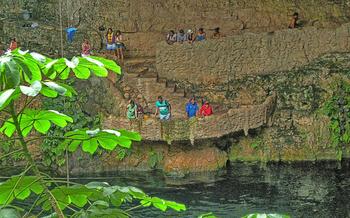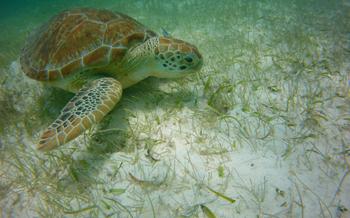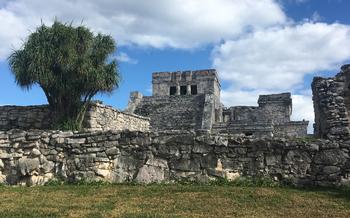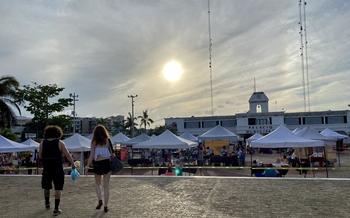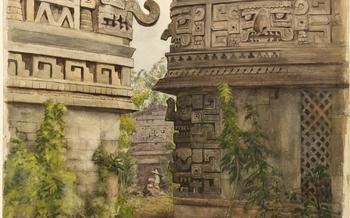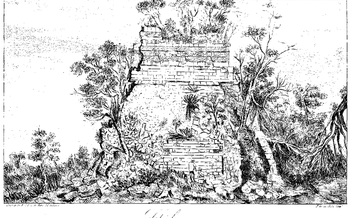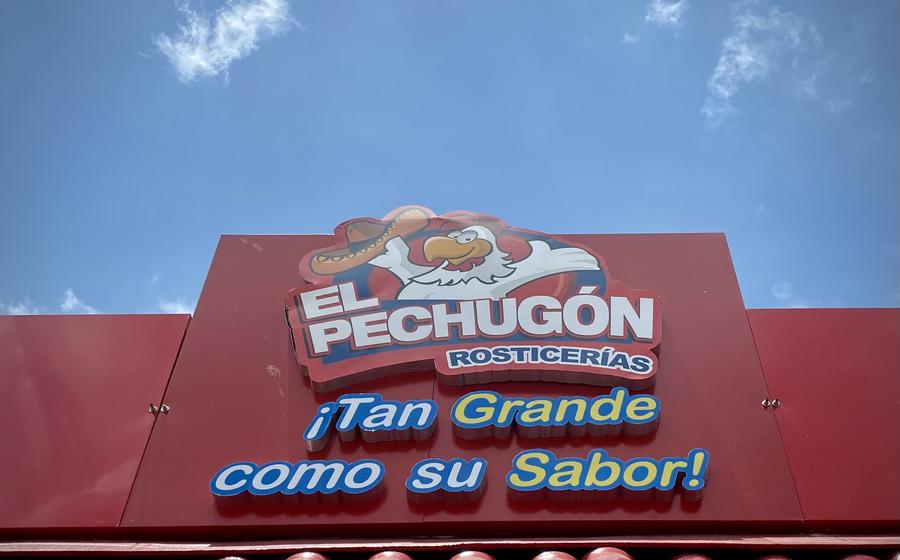
Cenote Calavera (near Tulum)
- Getting to the Cenote Calavera
- Cenote Calavera Entrance Fees
- What to Bring to the Cenote Calavera
- Safety Guidelines at the Cenote Calavera
- Cenote Calavera Tours
- Restaurants and Food Options Near the Cenote Calavera
- Hotels and Accommodation Near the Cenote Calavera
- History and Cultural Significance of the Cenote Calavera
- Environmental Conservation at the Cenote Calavera
- Cenote Calavera for Photography and Instagram
- Best Time to Visit the Cenote Calavera
Getting to the Cenote Calavera
The Cenote Calavera is located about 12 miles (20 kilometers) south of Tulum, making it an easy day trip from the popular tourist destination. Driving from Tulum, take Highway 307 south towards Felipe Carrillo Puerto. After about 10 miles (16 kilometers), turn right onto a dirt road marked with a sign for the cenote. Follow the road for about 2 miles (3 kilometers) until you reach the cenote entrance.
If you don't have a car, you can take a taxi or tour from Tulum or Playa del Carmen. The journey from Playa del Carmen takes about an hour and a half, while from Cancun, it takes about two hours. Several tour operators offer day trips to the Cenote Calavera, which typically include transportation, entrance fees, and snorkeling or diving equipment.
When driving to the cenote, be aware that the road conditions can be rough in some places. It's advisable to rent a car with high ground clearance or take a taxi or tour if you're not comfortable driving on rough roads.
Cenote Calavera Entrance Fees
The entrance fee to the Cenote Calavera is 200 pesos for adults and 100 pesos for children under 12 years old. This fee includes access to the cenote, as well as basic facilities like restrooms and changing rooms. For an additional 100 pesos, visitors can rent a life jacket, which is mandatory for swimming in the cenote.
The entrance fee helps to cover the costs of maintaining the cenote and its facilities, as well as supporting conservation efforts to protect the cenote's delicate ecosystem. Visitors can contribute to these efforts by paying the full entrance fee and by following the cenote's rules and regulations, such as not using sunscreen or insect repellent in the water, and not touching or disturbing the wildlife.
Tip: To save money on the entrance fee, consider visiting the cenote during the week, as it tends to be less crowded and cheaper than on weekends. Additionally, some tour operators offer discounts on cenote entrance fees when booking a guided tour.
What to Bring to the Cenote Calavera
Packing the right items for a day at the Cenote Calavera is essential for a safe and enjoyable experience. Swimwear and towels are a must, of course, and it's advisable to bring a change of clothes in case you get wet. Water shoes or sandals with good traction are recommended to protect your feet from sharp rocks and slippery surfaces.
Sunscreen, sunglasses, and a hat are crucial for protection against the intense Mexican sun. Consider bringing a waterproof camera or GoPro to capture your underwater adventures. If you plan to snorkel or dive, rent or bring your own snorkeling gear, including a mask, snorkel, and fins.
A small backpack or dry bag is handy for carrying your belongings, and don't forget to bring plenty of water to stay hydrated. Snacks are also a good idea, as there are limited food options available at the cenote.
Remember to leave behind valuables, jewelry, and anything that could get damaged by water. By packing smart, you can ensure a comfortable and worry-free day at the Cenote Calavera.
Safety Guidelines at the Cenote Calavera
Respect the cenote's natural environment and wildlife. Avoid touching or disturbing the fragile rock formations, plants, and animals that make this place unique. Take only memories and leave only footprints.
While the Cenote Calavera is generally safe for swimming and exploration, there are a few precautions you should take to ensure a safe and enjoyable experience:
-
Life jackets are mandatory for all swimmers and should be worn at all times. The water in the cenote can be deep and cold, and a life jacket will help you stay afloat and avoid any accidents.
-
Avoid diving into shallow areas. The water level in the cenote can vary, and there may be hidden obstacles or rocks below the surface. Always check the depth of the water before diving or jumping in.
-
Be aware of your surroundings and pay attention to the signs and instructions posted around the cenote. These signs are there for your safety, so please follow them carefully.
-
If you have any concerns or questions, don't hesitate to ask a lifeguard or staff member for assistance. They are there to help you have a safe and enjoyable time at the Cenote Calavera.
Remember, safety should always come first when exploring cenotes. By following these guidelines and being mindful of your surroundings, you can help ensure a safe and unforgettable experience for yourself and others.
Cenote Calavera Tours
Organized tours offer a convenient and informative way to explore the Cenote Calavera. These tours typically include transportation to and from the cenote, as well as snorkeling or diving equipment rental. Some tours also provide guided exploration of the cenote, with experienced guides who can share insights into the cenote's history, geology, and marine life.
Advantages of Taking a Tour
- Convenience: Tours take care of the logistics, so you can relax and enjoy the experience without worrying about transportation or equipment.
- Safety: Tours are led by experienced guides who are trained in safety procedures and can help ensure your safety while swimming, snorkeling, or diving in the cenote.
- Education: Guides can provide valuable information about the cenote's history, geology, and marine life, enhancing your understanding and appreciation of this natural wonder.
Practical Suggestions
- Booking Tours: Book your tour in advance, especially during peak season, to avoid disappointment. Look for reputable tour operators with good reviews.
- Prices: Prices for tours vary depending on the operator, the duration of the tour, and the inclusions. Expect to pay around $50-$100 per person for a half-day tour.
Anecdotes
- During a guided tour of the Cenote Calavera, our guide pointed out a hidden underwater cave that we would have missed if we had been exploring on our own. It was an unforgettable experience to swim through the cave and discover its hidden beauty.
- On another tour, our guide helped us identify several species of fish and other marine life that we would not have been able to recognize on our own. It was fascinating to learn about the diverse ecosystem of the cenote.
Restaurants and Food Options Near the Cenote Calavera
After a refreshing dip in the Cenote Calavera, satisfy your appetite with a culinary adventure in the nearby area. From local eateries serving authentic Mexican cuisine to upscale restaurants offering a fusion of flavors, there's something to suit every palate.
For a taste of traditional Mexican fare, head to "El Rinconcito Mexicano", a cozy restaurant known for its delicious tacos, enchiladas, and refreshing margaritas. If you prefer a more upscale dining experience, "La Palapa del Pescador" offers a delightful menu of seafood specialties, accompanied by stunning ocean views.
For those on a budget, there are several affordable options available. "La Taqueria del Pueblo" serves mouthwatering tacos at unbeatable prices, while "La Loncheria La Central" offers a variety of sandwiches, tortas, and fresh juices.
If you're looking for a quick bite to eat, there are several food trucks and stands scattered around the area, offering everything from tacos and burritos to tropical fruit smoothies.
And for those who prefer to pack their own snacks, there are several convenience stores and supermarkets nearby where you can stock up on drinks, snacks, and picnic essentials.
Hotels and Accommodation Near the Cenote Calavera
The Cenote Calavera's proximity to popular tourist destinations like Tulum and Playa del Carmen offers a wide range of accommodation options. Whether you seek budget-friendly hostels, cozy guesthouses, or luxurious resorts, there's something for every traveler. For a truly immersive experience, consider staying in one of the charming nearby towns, such as Akumal or Puerto Aventuras, and enjoy the local atmosphere and culture.
Practical suggestions include:
- Budget-friendly options:
- Aldea Zama in Tulum offers stylish hostels and budget-friendly hotels within walking distance of the cenote.
-
Selina Tulum and Selina Playa del Carmen provide a vibrant social atmosphere and affordable dorm rooms or private cabanas.
-
Mid-range options:
- Hotel Xcaret Mexico in Playa del Carmen offers all-inclusive packages with access to nearby theme parks and cenotes.
-
Ahau Tulum offers eco-friendly cabanas and treehouses nestled in the lush jungle, just a short drive from the Cenote Calavera.
-
Luxury options:
- Rosewood Mayakoba in Playa del Carmen provides a secluded beachfront haven with private plunge pools and butler service.
- Belmond Maroma Resort & Spa in Riviera Maya features stunning oceanfront villas and world-class amenities.
Anecdotes:
- During my stay at a local guesthouse near the cenote, I had the opportunity to interact with the friendly owners and learn about Mayan culture and traditions.
- One evening, I stumbled upon a hidden gem - a charming beachfront restaurant serving delicious seafood and live music. It was the perfect spot to unwind after a day of exploring the cenote.
History and Cultural Significance of the Cenote Calavera
To the ancient Maya, cenotes were considered sacred portals to the underworld, a place of great spiritual and religious significance. The Cenote Calavera was no exception, believed to be a place of communication with the gods and a source of life-giving water. Offerings and rituals were performed here, and the cenote was a gathering place for ceremonies and celebrations. In modern times, the Cenote Calavera remains an important cultural symbol, attracting visitors from around the world who come to experience its natural beauty and learn about its rich history.
Environmental Conservation at the Cenote Calavera
Cenotes, with their unique ecosystems and fragile environments, face various threats, including pollution, over-tourism, and climate change. The Cenote Calavera is no exception, and concerted efforts are underway to protect and preserve its natural beauty for future generations. Eco-friendly practices, such as using biodegradable sunscreen and avoiding single-use plastics, are encouraged among visitors to minimize their environmental impact. Sustainable tourism initiatives, such as guided tours that educate visitors about the cenote's ecosystem and its importance, help raise awareness and promote responsible behavior. The local community also plays a vital role in conservation efforts, working to balance tourism with the preservation of their natural and cultural heritage. By embracing sustainable practices and supporting conservation initiatives, visitors can contribute to the long-term protection of the Cenote Calavera and ensure its continued existence as a natural wonder for generations to come.
Cenote Calavera for Photography and Instagram
With its mesmerizing crystal-clear waters, dramatic cave formations, and lush jungle surroundings, the Cenote Calavera is a photographer's paradise. Whether you're an amateur with a smartphone or a seasoned pro with a DSLR, the cenote offers endless opportunities to capture stunning images.
For the best lighting, plan your visit during the golden hours of sunrise or sunset when the sun's rays illuminate the cenote's interior, creating a magical golden glow. Experiment with different angles to showcase the cenote's unique features, such as the towering stalactites and stalagmites, the shimmering water surface, and the lush vegetation that surrounds the cenote.
Capture the cenote's beauty from above by using a drone or shooting from a high vantage point. This will give you a bird's-eye view of the cenote's crystal-clear waters and the surrounding jungle canopy. Don't forget to adjust your camera settings to compensate for the bright sunlight and to use a polarizing filter to reduce glare and enhance the colors.
For Instagram-worthy shots, take advantage of the cenote's natural backdrops. Pose in front of the cascading waterfalls, swim through the crystal-clear waters, or capture the stunning sunset over the cenote. Use vibrant editing tools to enhance the colors and create a visually appealing image that will make your followers double-tap.
Remember to be respectful of the cenote's natural environment and avoid disturbing the wildlife or damaging the delicate formations. By following these tips, you'll be able to capture the beauty of the Cenote Calavera and share your incredible photos with the world.
Best Time to Visit the Cenote Calavera
The best time to visit the Cenote Calavera is during the dry season, which runs from November to April. During this time, the weather is generally sunny and dry, with fewer chances of rain. The water levels in the cenote are also lower, making it easier to swim and explore the underwater caves. If you're interested in snorkeling or diving, the dry season offers the best visibility.
As for the time of day, it's best to visit the cenote early in the morning or late in the afternoon to avoid the crowds. This will give you a chance to enjoy the cenote's tranquil beauty and take stunning photos without hordes of people in the background.
Keep in mind that the Cenote Calavera is a popular destination, so it's always a good idea to arrive early to secure a parking spot and avoid long lines. Also, remember to bring water shoes as the ground around the cenote can be rocky and uneven.
